If you love heat, you are going to love Shatta. This fiery Middle Eastern hot sauce is so easy to make and is endlessly versatile. Serve it with sharwama, spice up sabich, throw it on a tapas platter or add it to your favourite salad dressing.
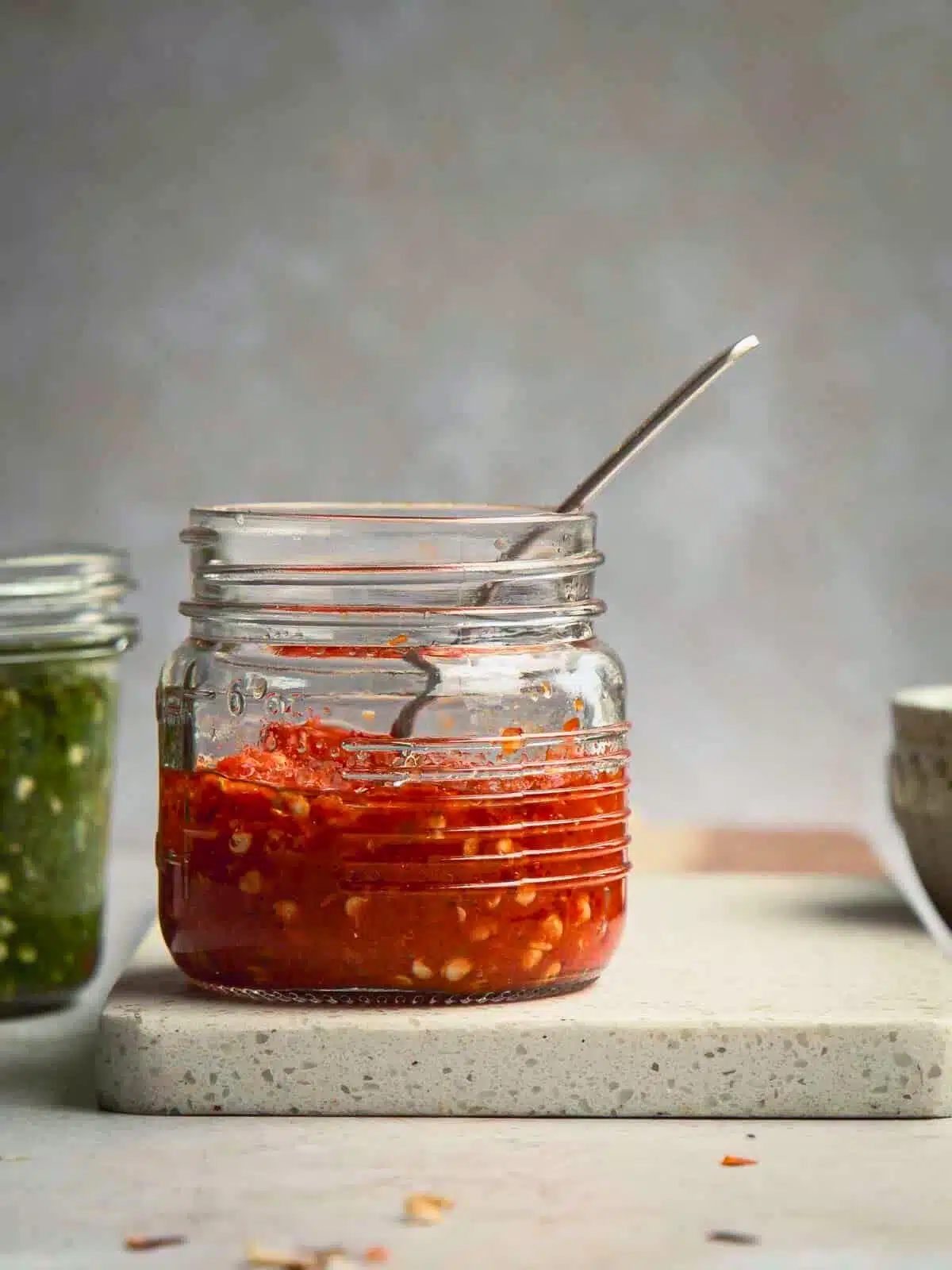
Jump to:
What is Shatta?
Shatta sauce is a fiery condiment that originated in the Middle East, specifically in Yemen. Popular in Syrian, Jordanian, Lebanese and Palestinian cooking, this spicy sauce is fresh and versatile. It's also going to blow your dang socks off.
Traditionally, Shatta is made by pounding fresh red or green chilies with salt before sitting them in the sun for a few days to ferment. Afterwards the chillies are combined with extra-virgin olive oil, spices, and herbs.
Don't worry, we're not doing that here. This version is super easy.
How is Shatta Fermented?
Shatta chilli paste is a product of lacto-fermentation. Lactic acid bacteria (LAB) convert sugar into lactic acid giving lacto-fermented foods their characteristic sourness.
Non-iodised salt is used to kill off any nasty bacteria creating a safe environment for LAB (the good bacteria) to thrive without any nasty competition.
Why This Sauce Works
If, like us, you keep a bottle of chilli sauce or spicy homemade kimchi on standby, I think you are going to love this Middle Eastern chilli sauce.
Ingredients & Equipment
Ingredients
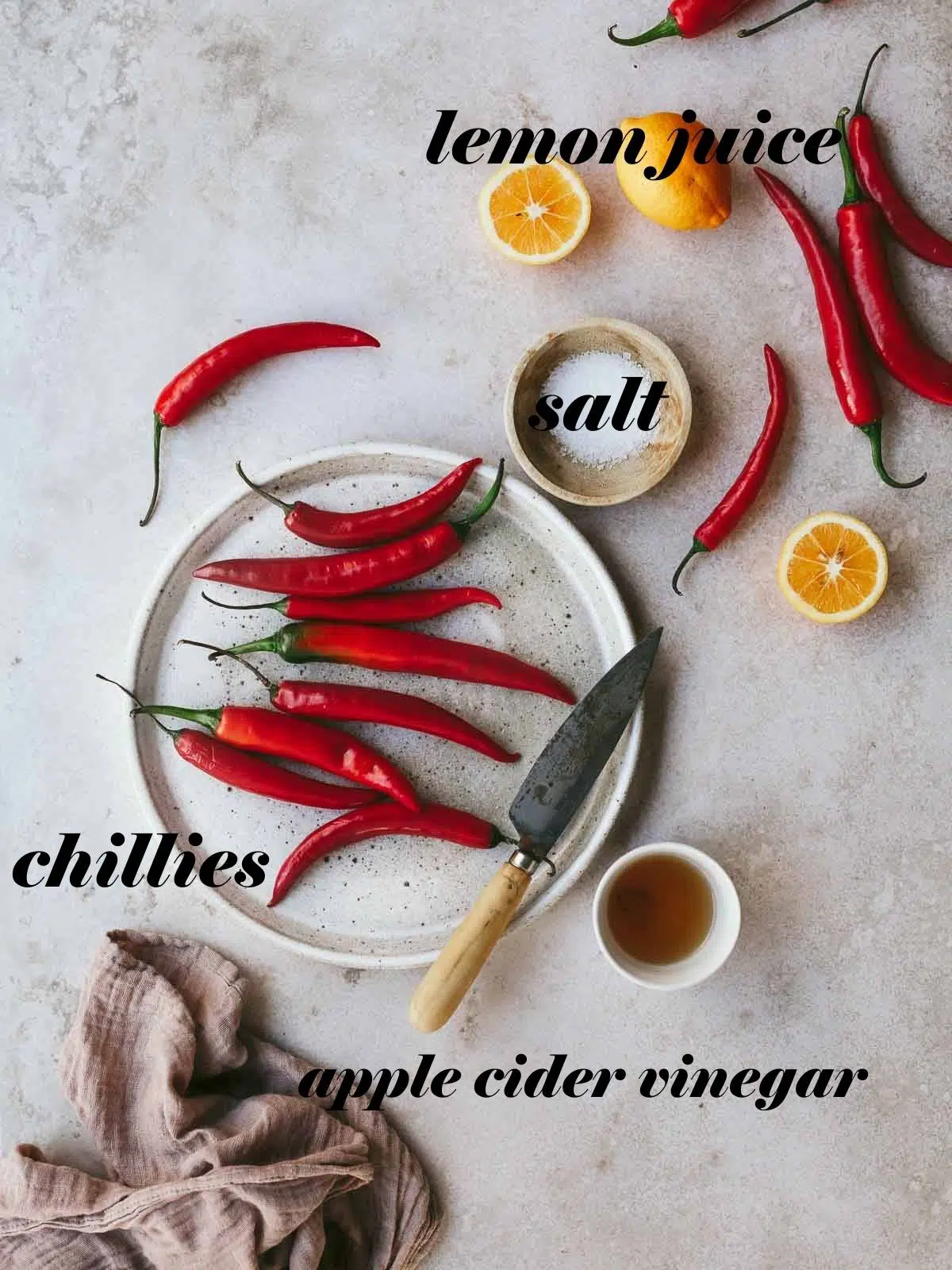
You'll find some recipe variations below, but I'm pretty faithful to my favourite version from Falastin: A Cookbook by Sami Tamimi and Tara Wigley.
This Middle Eastern chilli sauce recipe is simple, has a handful of ingredients and keeps beautifully.
Here's what you'll need.
Chillies (Peppers). I use Cayenne chillies or jalapeño chillies. We go through a mountain of this paste so I like to alternate. One week I make a green Shatta, the next, red.
Non-iodised salt. Use a salt that doesn't contain anti-caking agents or additives, they inhibit the fermentation process. Table salt won't work as it generally contains both iodine and anti-caking additives. You are after a nice, clean sea salt or something similar.
Apple cider vinegar. You could use a white wine vinegar or a white vinegar but I like the slight sweetness and more subtle flavours of apple cider vinegar.
Lemon juice. Fresh lemon gives a lovely fresh, zesty kick but if you don't have any on hand, just add more vinegar.
Olive oil. Use the best quality oil you can manage.
Equipment
Sterilised jars - find full instructions on sterilising jars in my strawberry jam with chillies post.
A food processor or mortar and pestle.
Salt By Weight
The original recipe for Shatta from Falastin uses a tablespoon measure of salt.
If you would like to make a larger or smaller batch, you can go ahead and calculate how much salt you'll need to ferment your vegetables by weight.
A general rule of thumb is to use 2 to 3% of salt by weight of the vegetables or fruit being fermented. To calculate the amount of salt needed,
Step-by-Step Guide
You'll find full instructions and measurements in the recipe card at the bottom of the post.
Honestly, making this chilli sauce is super easy.
Step 1.
Remove the stems and slice the chillies in to coin-width rounds
Step 2.
Add the slices to a large bowl and stir in the salt
Step 3.
Transfer the salted chillies to the sterilised jars, pop a lid on and transfer them to a cool corner of the kitchen to ferment for 3 days. You can also leave them in the fridge for 3-5 days.
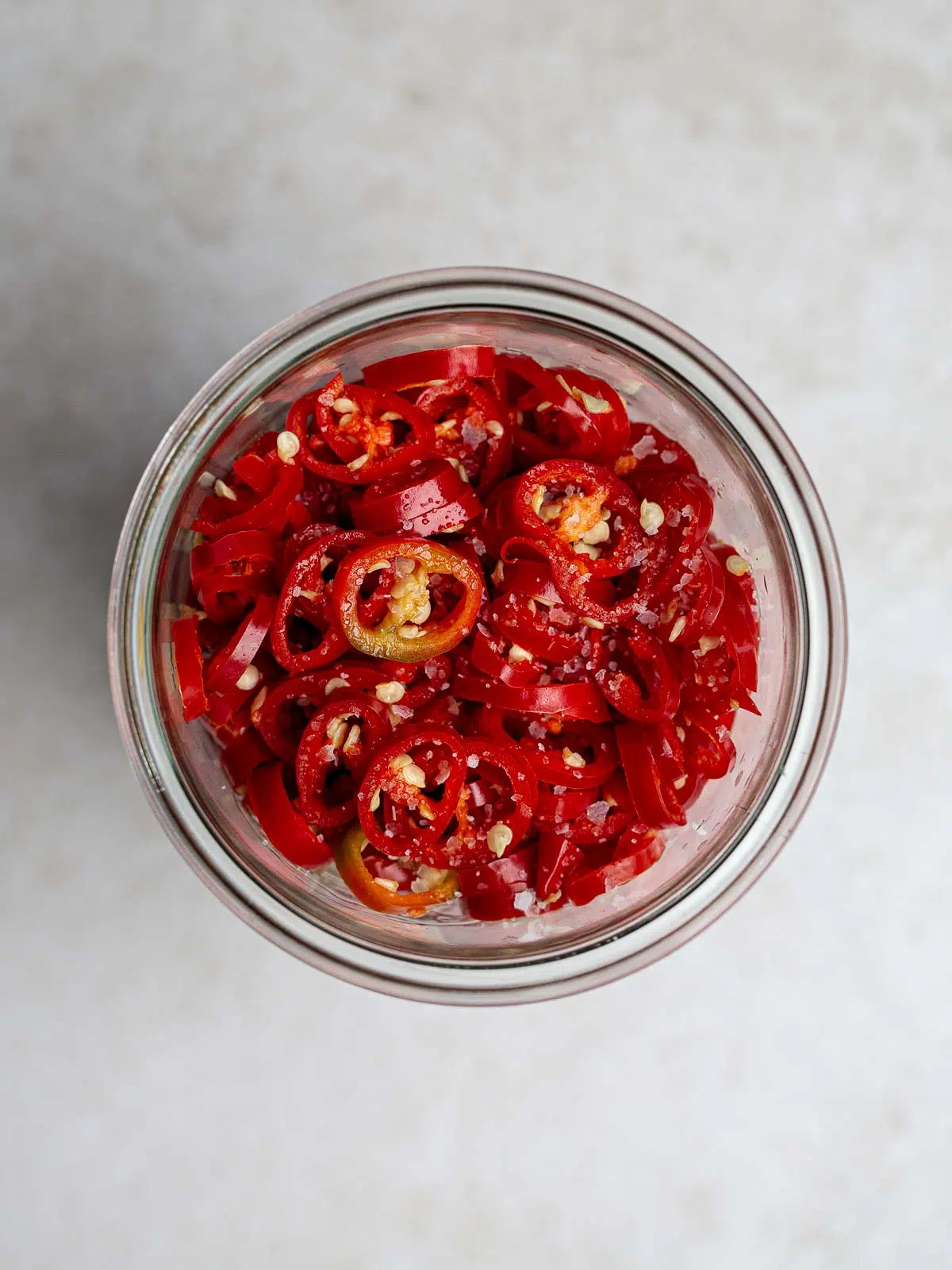
Step 4.
After the 3 days, strain the chillies through a fine colander and transfer them to a food processor. Add the apple cider vinegar and lemon juice and process until desired consistency.
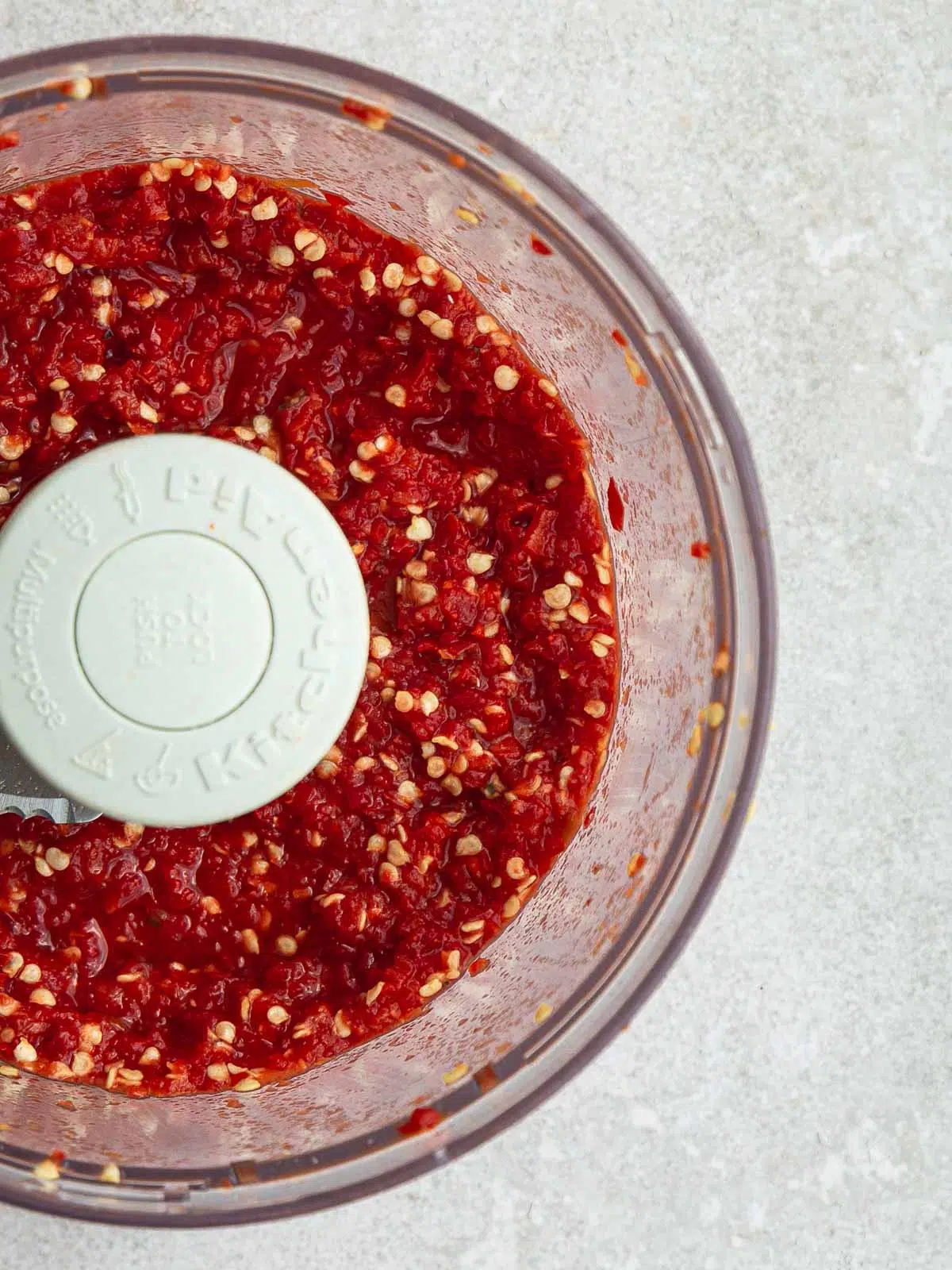
Step 5.
Spoon the chilli paste back in to the jars and pour in enough olive oil to cover. Store the Shatta back in the fridge for up to 6 months.
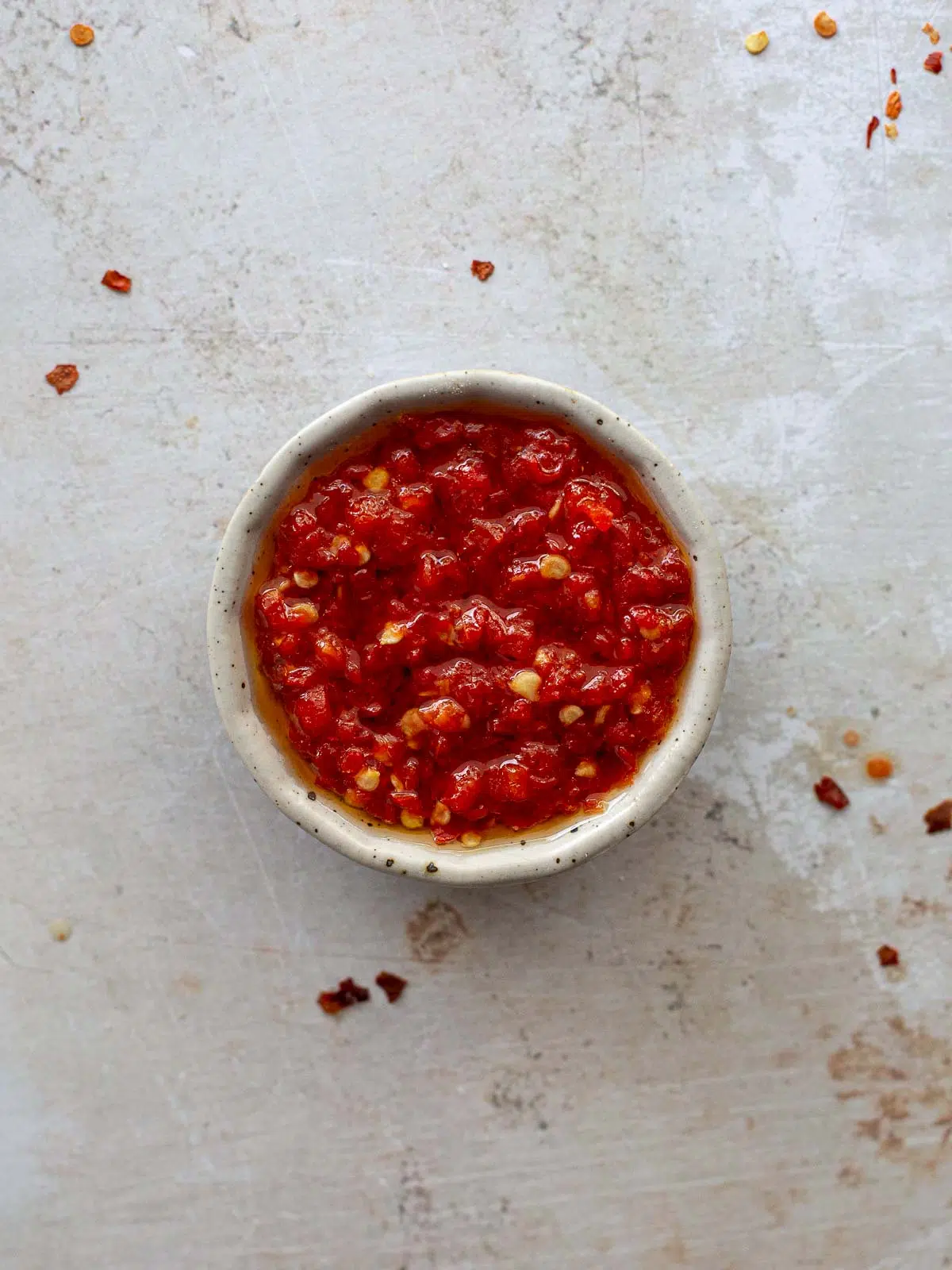
Fermentation Time
The good bacteria produced during lacto-fermentation thrive at temperatures between 18°C and 22 °C (65 °F and 72 °F), but they do tolerate a much wider range. Cooler temperatures slow down fermentation, and warmer temperatures speed it up.
If you live in a cooler climate, leaving the salted chillies out in a dark corner of your kitchen for 3 days is fine. If it's hot where you live, or humid, ferment them for a day on the counter (out of the sun) and then pop them in the fridge for 3 days. The longer you leave the chillies, the more sour they will get.
Solidifying Olive Oil
Olive oil solidifies in the fridge but you have a few options to bring it back to room temperature.
Either, pull out the shatta for at least 10-minutes before serving or you can sit the jar in a bowl of warmish water until the oil liquifies again. Finally, you can just spoon out what you want to use and pop it in the microwave for 10-seconds.
Food Safety
While this shatta recipe generally keeps in the fridge in a sealed jar for up to 6-months, it would be safest to start checking it at the 3-month mark. If it smells "off" or has developed dark mould, ditch it. Better safe than sorry.
What to Eat With Shatta
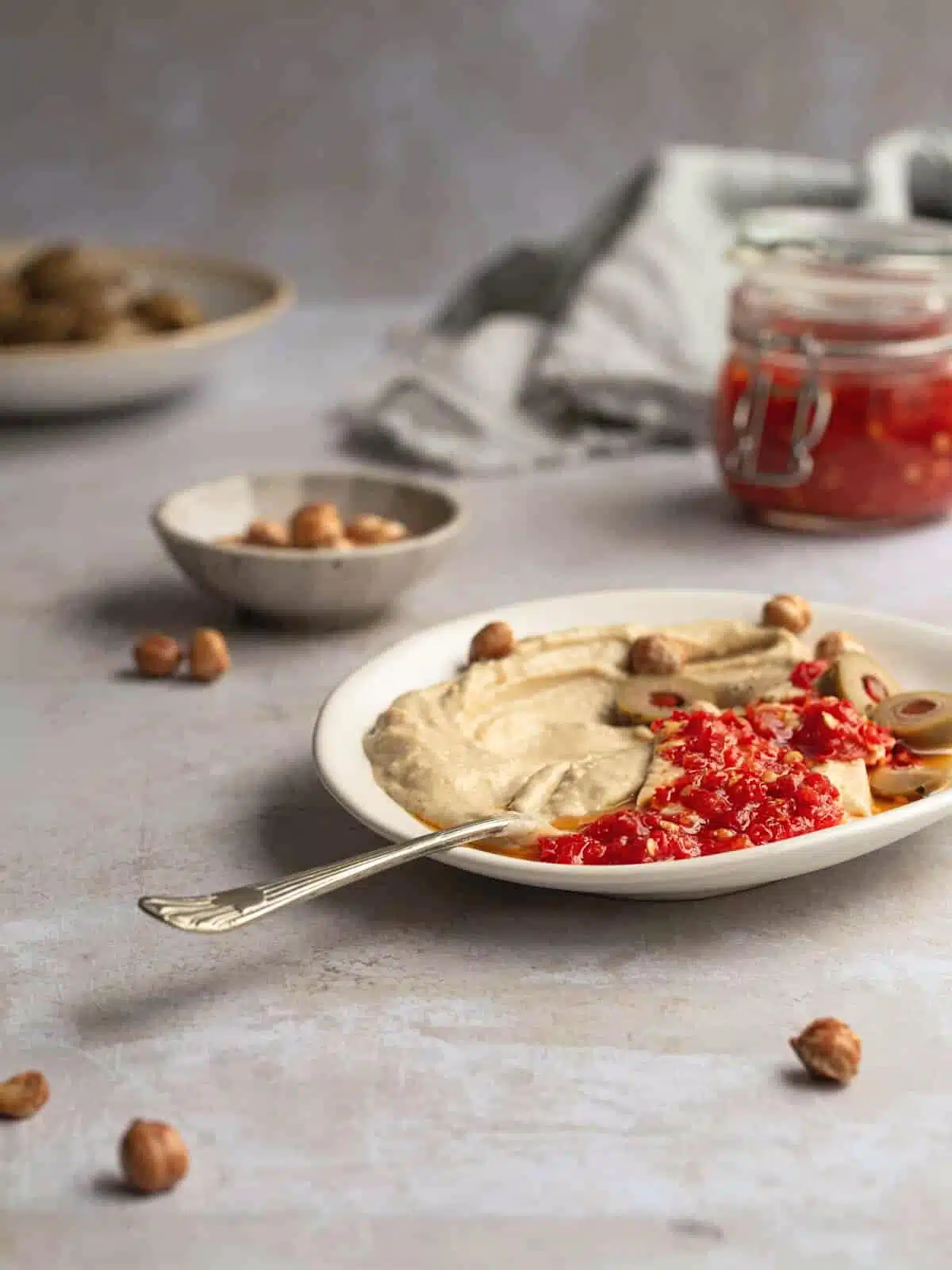
Recipe Variations
I am faithful to this base recipe, but you can mix your shatta up a number of ways.
FAQs
In the fridge, shatta will last up to 6-months. Always check though. If you notice black in your paste or it smells "off", get rid of it. Better food-safe than sorry.
This one is!
You can make this chilli paste without fermenting it, but it won't keep as long. Use a half teaspoon rather than the full 1 tablespoon of salt and process all the ingredients (except the olive oil) together. Transfer to a jar and keep in the fridge for up to 1 week only.
So, the not-so-secret secret is that this vegan hot sauce is really spicy.
However, blending the salted chillies with vinegar and lemon juice tempers the heat a little and you are left with a spicy but clean chilli taste. You can add fresh herbs to the mix and temper the flavour even further.
It can. The fermentation will stop in the cold freezer, but it will freeze and thaw quite well. Freeze it in smaller portions as you can't thaw a full container and then refreeze it.
More Sauces and Sides
Sign up to my newsletter and follow along on Facebook, Pinterest and Insta for all the latest news. If you like this recipe, please check out my cookbook "Great Vegan Meals for the Carnivorous Family" It's full of simple, carnivore-approved family recipes.
Make This Recipe
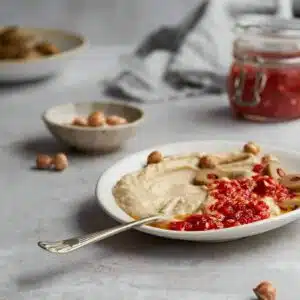
Shatta (Middle Eastern Chilli Paste) Recipe
Equipment
- Sterilised jars
- Food processor or mortar & pestle
Ingredients
- 250 grams long red or jalapeño chillies stems removed
- 1 tablespoon salt, non-iodised with no caking agents
- 3 tablespoon apple cider vinegar
- 1 teaspoon lemon juice
- 3 tablespoon olive oil enough to cover the paste in the jar
Instructions
- Sterilise a 500ml jar and lid. Instructions for sterilising jars.
- Slice the chillies into coin-width rounds
- Combine the sliced chillies with the salt and stir through well.
- Transfer the salted chillies to the jar and pop the lid on. Place the jar in a cool, shady place for 3 days or transfer to the fridge for up to 7 days.
- Drain the chillies through a colander or sieve and transfer them to a food processor or mortar and pestle.
- Add the vinegar and lemon juice and process - or pound in the pestle - until you are happy with the texture. I like my saucy but with texture.
- Transfer the chilli paste back to its jar and pour in enough olive oil to cover it. Store in the fridge for up to 6 months.

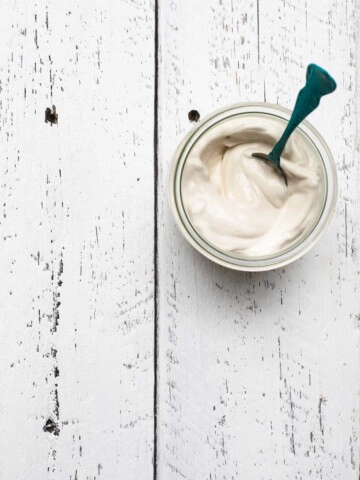

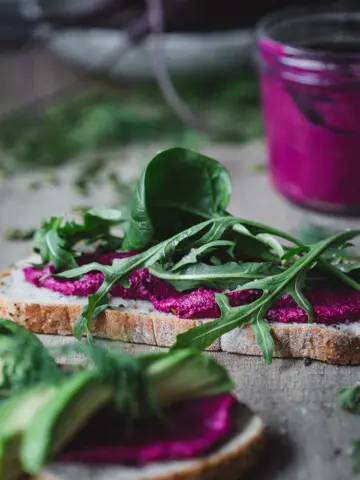
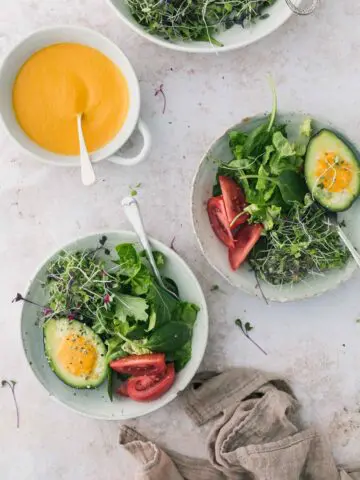

Pete says
I have a chilli and garlic ferment ready to go I am going to experiment with for this I have made a lot of fermented chilli sauces before but this looks lovely thanks.
GF says
Hi, love the simplicity of this recipe. It's delicious. One challenge I'm running into is the skins of the fresnos are not fully breaking down in the food processor. So the texture of the paste is nice and soft but the skins are present and a bit distracting.
Amanda says
That's a tricky one. I am not sure how you get around the skins, to be honest. I've never really noticed them. Sorry, I am not much help to you here. Maybe try smaller, younger chillies? Or process the paste down a little longer for a smoother paste?
GF says
Thank you for the reply. It's delicious nonetheless. Keep up the great work!
Neil Stevens says
Savagely hot but deliciously saltly and sour.
Amanda says
Absolutely. It is a total kick in the pants, but so good. I am glad you enjoyed it, Neil. 🙂
Liz says
This sounds delicious!
Amanda says
It is! 🙂
Jo says
Would it work without salt please?
Amanda says
Hi Jo. If you don't want to use salt, you can make the Shatta straight away. Mince all the ingredients in a food processor before transferring the paste (sauce) to the fridge. However, without the salt, it does not ferment and will only last in the fridge for up to a week. 🙂
Gill Brennan says
Hi,
I've made this twice now and it's great! To save time, can I use a blender to mince the chillis before fermenting?
Amanda says
Hi Gill. I am so happy you're enjoying the recipe. Ottolenghi does a quick Shatta where he chops up the peppers at the start. It isn't a fermented version, however. I haven't done it myself, but Shatta is traditionally made my pounding the peppers/chillies with salt so it should work. 🙂 I would love to hear how you go. A.
Ss Lutfi says
I have t made it yet. Can I use sea salt or Kosher salt?
Shezell Lutfi
Amanda says
Hi Shezell, you can use any salt that doesn't have iodine in it so sea salt or Kosher are fine. I hope you enjoy it!